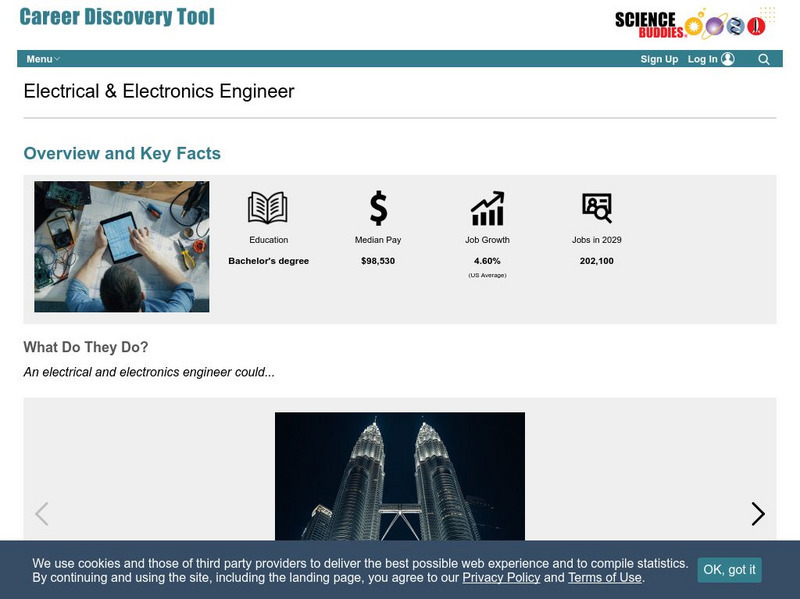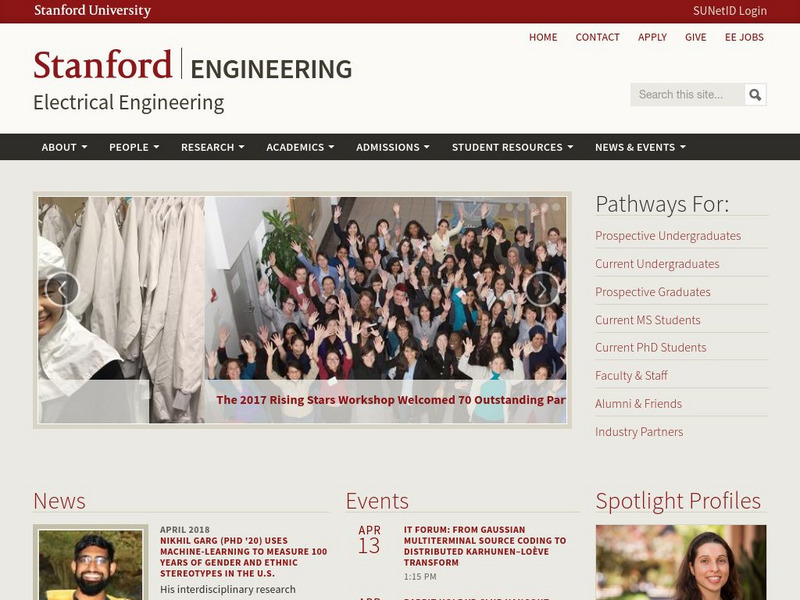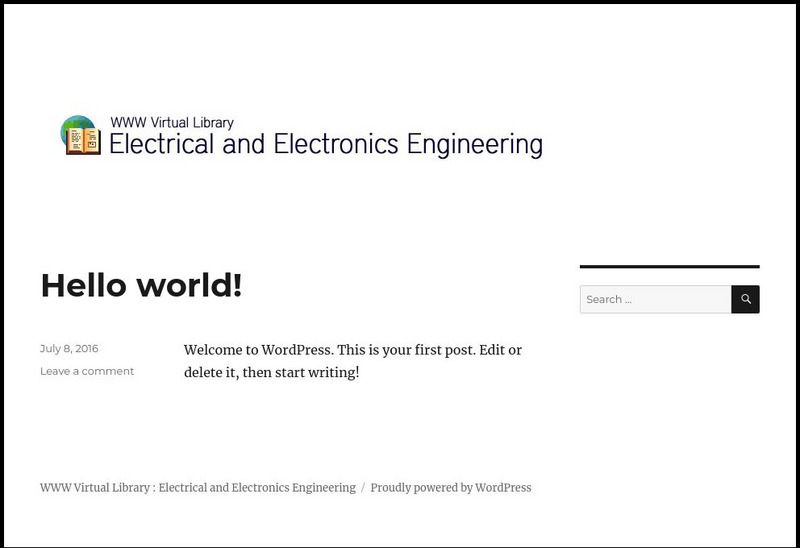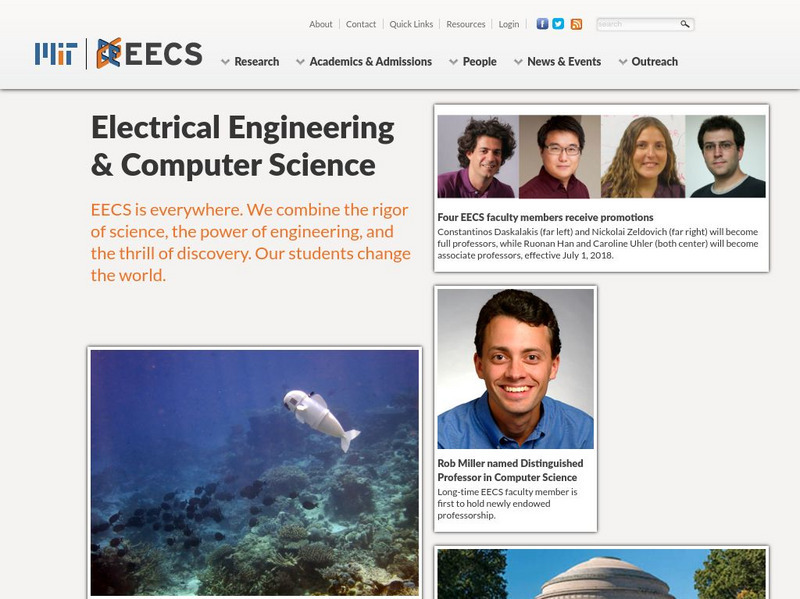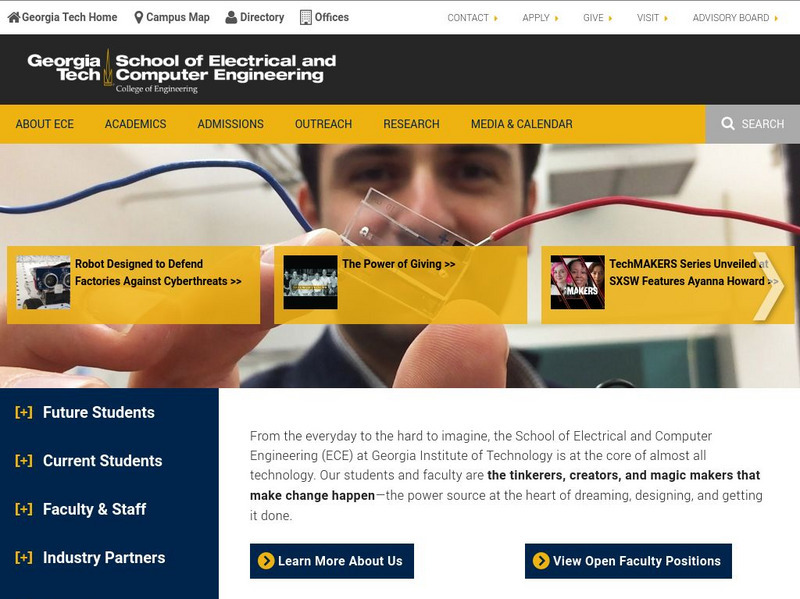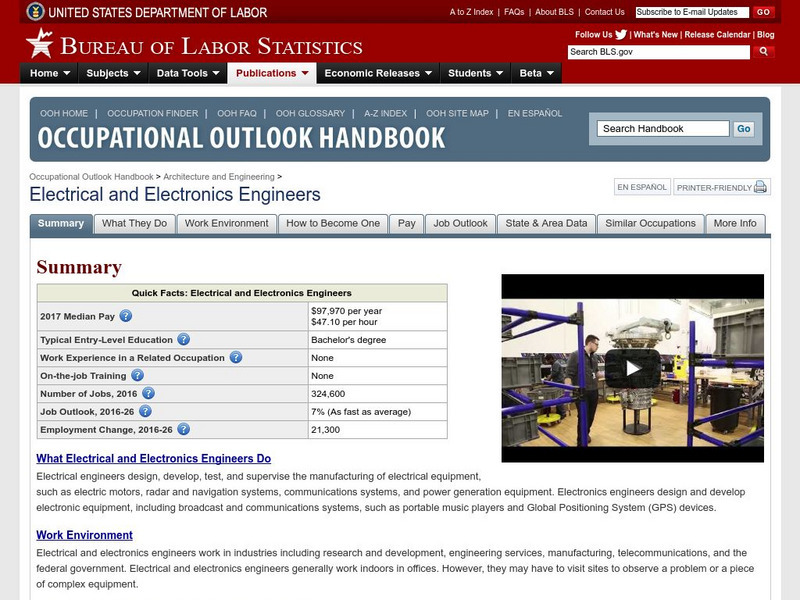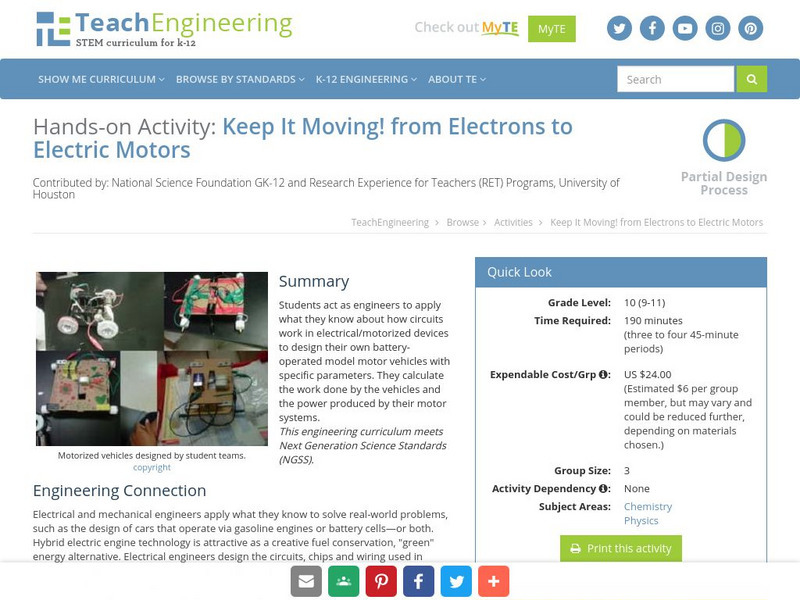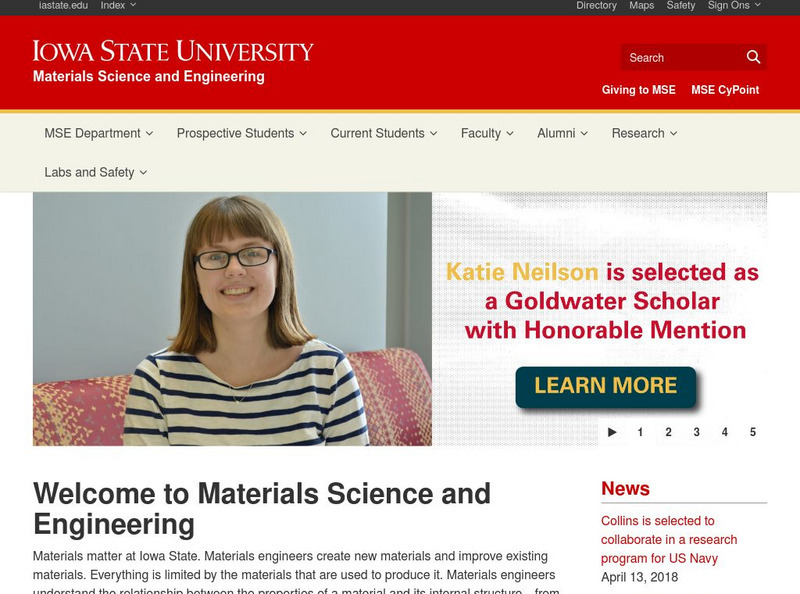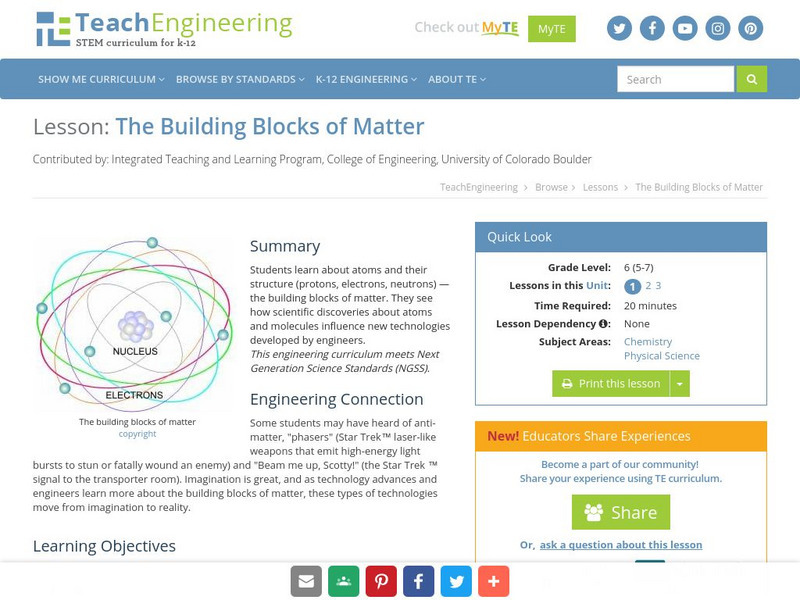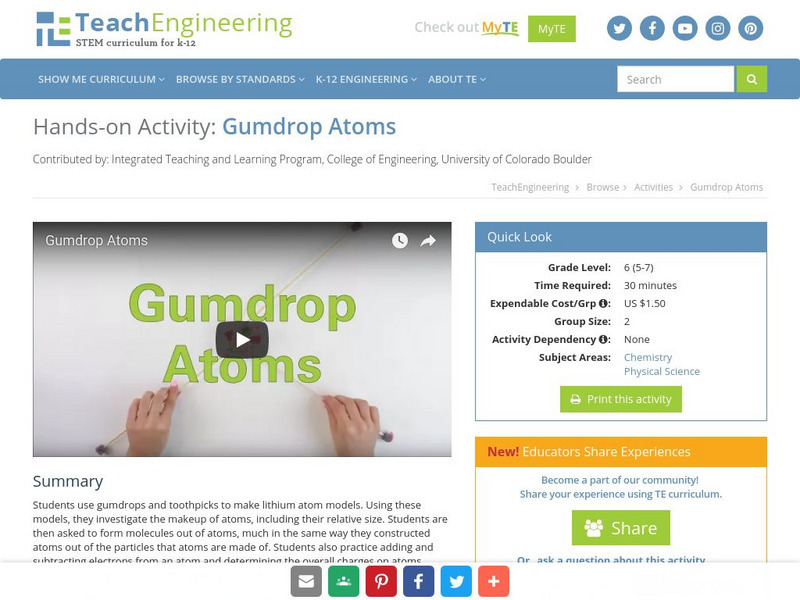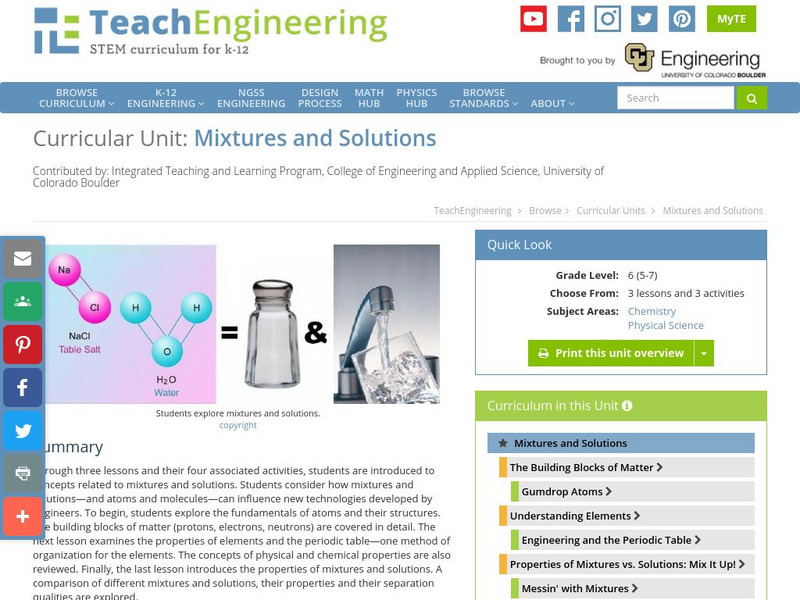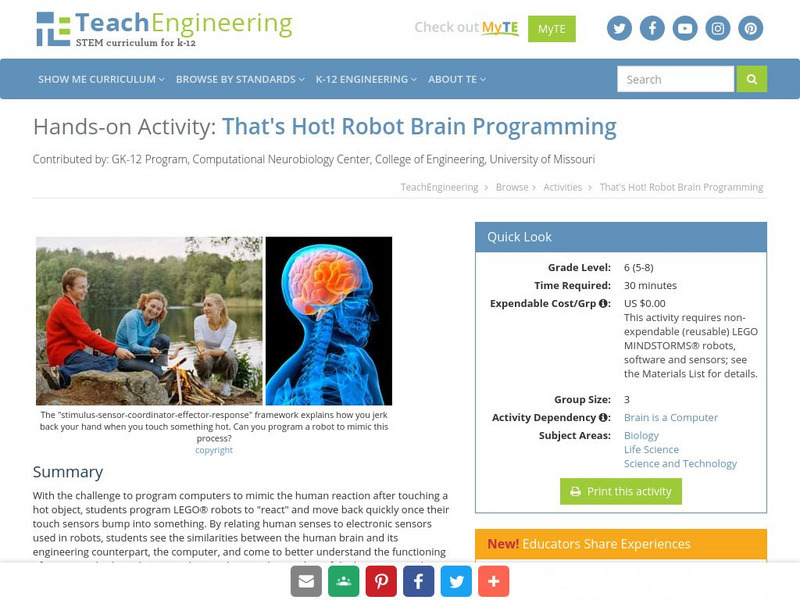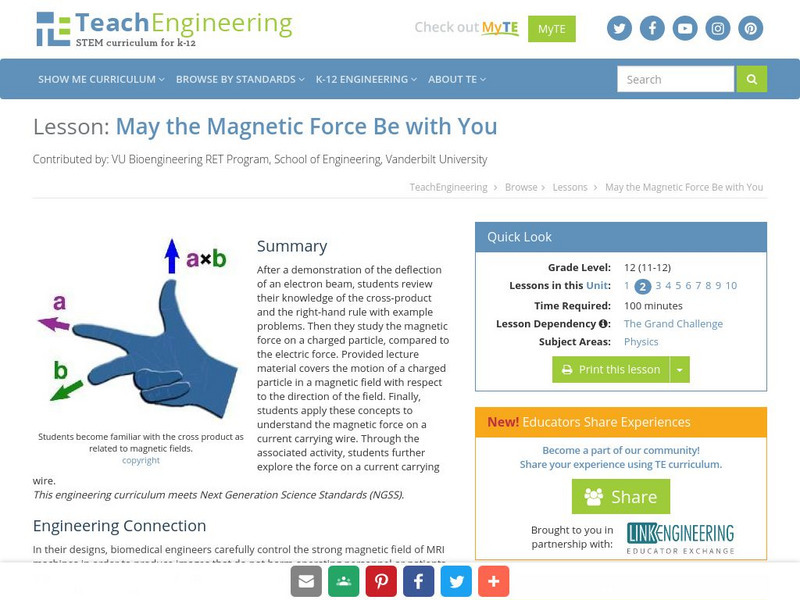Science Buddies
Science Buddies: Career Profile: Electrical and Electronics Engineer
Find out about the many pathways available to one who has a career as an electrical or electronics engineer. Design video games, cell phones, GPS systems, anything that requires electricity to work. This Science Buddies site lays out the...
Grammarly
Grammarly Handbook: Institute of Electrical/electronics Engineers
Notes and examples for formatting texts, bibliographies, and citations in the IEEE (Institute of Electrical and Electronics Engineers) Style.
Stanford University
Stanford University Department of Electrical Engineering
This is the homepage of the Stanford University of Department of Electrical Engineering. There are links to information on research, academics, seminars, faculty, etc.
Stanford University
Stanford University Department of Electrical Engineering
This is the homepage of the Stanford University of Department of Electrical Engineering. There are links to information on research, academics, seminars, faculty, etc.
Other
The Electrical Engineering Virtual Library
This site has links to various topics about electrical engineering. These include institutions, resources, journals, etc.
Massachusetts Institute of Technology
Mit: Department of Electrical Engineering and Computer Science
This is the website for the Massachusetts Institute of Technology's Department of Electrical Engineering. The site has links to research, academics, etc.
Other
Georgia Tech School of Electrical and Computer Engineering
Homepage of the Georgia Tech School of Electrical and Computer Engineering. This site contains information about ongoing research, academics, facilities, faculty, etc. at the university.
US Department of Labor
Bureau of Labor Statistics: Electrical Engineers
This resource provides information about electrical engineer careers.
Massachusetts Institute of Technology
Mit: Open Course Ware: Introduction to Electronics, Signals, and Measurement
Online, college-level course on electronics. Class features the practical introduction to electronics with a focus on measurement and signals. Accessible components include downloadable lecture notes, assignments, and previous quiz and...
TeachEngineering
Teach Engineering: Keep It Moving! From Electrons to Electric Motors
Students act as engineers to apply what they know about how circuits work in electrical/motorized devices to design their own battery-operated model motor vehicles with specific paramaters. They calculate the work done by the vehicles...
Technovation
Curiosity Machine: Challenges: Engineer an Electronic Water Level Detector
Make a device that will notify people when the water level drops in this challenge. Students will do this by building an open circuit that completes when the water level drops below a certain level and/or goes above a certain level. The...
Iowa State University
Iowa State University: Materials Science and Engineering
Learn about Iowa State University's department of Materials Science and Engineering, including news, academics, people, research, and general information.
TeachEngineering
Teach Engineering: From Sunlight to Electric Current
The lesson will first explore the concept of current in electrical circuits. Current will be defined as the flow of electrons. Photovoltaic (PV) cell properties will then be introduced. This will lead to the principle of "Conservation of...
Massachusetts Institute of Technology
Mit: Open Course Ware: Courses: Electrical Engineering: Circuits and Electronics
College-level electrical engineering course highlighting circuits and electronics. This course introduces the fundamentals of the lumped circuit abstraction. Course features include video lectures, suggested readings, labs, lecture...
TeachEngineering
Teach Engineering: The Fundamental Building Blocks of Matter
This lesson plan explores the fundamentals of atoms and their structure. The building blocks of matter (protons, electrons, neutrons) are covered in detail. Students think about how atoms and molecules can influence new technologies...
NASA
Nasa: Innovative Engines
NASA's Glenn Research Center reports on its innovative engines program, namely ion propulsion, a technology that once only powered imaginary spacecraft in science fiction novels. It is now a reality.
National Academy of Engineering
Greatest Engineering Achievements of the 20th Century: Household Appliances
Learners investigate household appliances in the 20th century. Some topics explored are cooking, washing, and electronics. The resource consists of historical information, a timeline, and a personal essay by a key innovator.
TeachEngineering
Teach Engineering: Gumdrop Atoms
In this activity, students make a model of a lithium atom using gumdrops and toothpicks. Using this model, they investigate the makeup of an atom, including its relative size. Students also practice adding and subtracting electrons from...
TeachEngineering
Teach Engineering: Mixtures and Solutions
This unit covers introductory concepts of mixtures and solutions. Students think about how mixtures and solutions, and atoms and molecules can influence new technologies developed by engineers. The first lesson explores the fundamentals...
TeachEngineering
Teach Engineering: Our Bodies Have Computers and Sensors
Students learn about the human body's system components, specifically its sensory systems, nervous system and brain, while comparing them to robot system components, such as sensors and computers. The unit's life sciences-to-engineering...
Science Buddies
Science Buddies: Project Ideas: Learn to Design an Ion Engine
The goal of this electricity and electronics science fair project is to understand how ions are used to propel spacecraft in space, and to use a NASA online simulator to design your own ion engine. The Science Buddies project ideas are...
TeachEngineering
Teach Engineering: That's Hot! Robot Brain Programming
With the challenge to program computers to mimic the human reaction after touching a hot object, students program LEGO robots to "react" and move back quickly once their touch sensors bump into something. By relating human senses to...
TeachEngineering
Teach Engineering: How Does a Robot Work?
This lesson introduces electricity, batteries and motors using a LEGO MINDSTORMS NXT robot. The associated activity guides students to build a simple LEGO NXT set-up and see the practical implementation of the concepts discussed. Before...
TeachEngineering
Teach Engineering: May the Magnetic Force Be With You
This instructional activity begins with a demonstration of the deflection of an electron beam. Students then review their knowledge of the cross product and the right hand rule with sample problems. After which, students study the...
